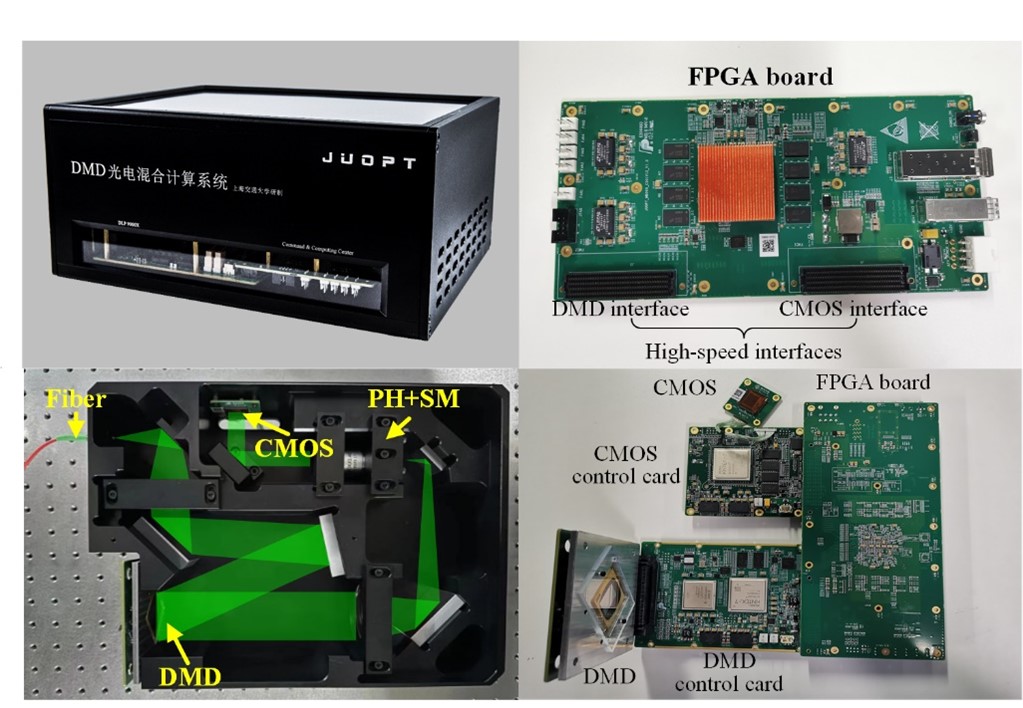- Home
- About Us
- Students
- Academics
-
Faculty
- Electrical Engineering
- Automation
- Computer Science & Engineering
- Electronic Engineering
- Instrument Science and Engineering
- Micro-Nano Electronics
- School of Software
- Academy of Information Technology and Electrical Engineering
- School of Cyber Security
- Electrical and Electronic Experimental Teaching Center
- Center for Advanced Electronic Materials and Devices
- Cooperative Medianet Innovation Center
- Alumni
-
Positions
-
Forum
News
- · Bin Dai's Team Unveils the Assembly Mechanism of β-Lactoglobulin Fibrils, Providing New Insights for the Development of Functional Nanomaterials
- · Mingyi Chen’s research group has made important progress in the field of analog-to-digital converter chips for brain-computer interface
- · Progress in the Development of Semiconductor Nanomaterials to Activate Pyroptosis for Cancer Therapy
- · Jiamiao Yang’s team achieved the high precision optoelectronic reservoir computing based on complex-value encoding
- · Significant Advancements in Resonator-Enhanced Quantum Sensing Achieved by Zenguihua's Team at the School of Sensing Science and Engineering
Jiamiao Yang’s team achieved the high precision optoelectronic reservoir computing based on complex-value encoding
Recently, Jiamiao Yang’s team from the School of Sensing Science and Engineering, with Professor Xunbin Wei, has made important progress in the optoelectronic reservoir computing based on light scattering. The research entitled “Optoelectronic reservoir computing based on complex-value encoding” has been published in the journal Advanced Photonics Nexus.

1.Background:
Since 2012, the consumption of computing power for training the largest AI models has increased by 300,000 times, doubling every 100 days on average, much faster than the speed of two-year doubling described by Moore's Law. In order to solve the problem of limited computing power of electronic computers, optical computing, which is physically realized by optical means, has gradually become an important means. Among them, the optoelectronic reservoir computing (ORC) based on light scattering is an advanced optical neural network. It can realize the matrix multiplication of tens of thousands of neurons at the speed of light by using the mechanism of light scattering to disperse and recombine light information, showing a unique advantage for time series analysis. However, the current ORC based on light scattering only uses the amplitude or phase of the scattered optical field to encode information, ignoring the interaction of various dimensions in the coherent light propagation, limiting the data input resolution and affecting the calculation accuracy of the neural network. In addition, the neural network is trained recursively through long data communication links between the light modulator, detector, and computer, which is a significant obstacle to the improvement of computing speed and stability.
2.Research content:
To solve the problem of limited network accuracy caused by single-dimensional data coding, Jiamiao Yang's team at Shanghai Jiao Tong University proposed a new method for optoelectronic reservoir computing based on complex-value encoding (CE-ORC). The data input resolution was improved by modulation the complex amplitude of the optical field, and the scale factor was introduced to fine-tune the reservoir dynamics to obtain better network performance. To solve the problem of limited network speed and stability caused by too long data communication link, the team built an integrated computing processor using high-speed communication interfaces and developed dedicated field programmable gate arrays, greatly improving the computing speed.

Principle of the optoelectronic reservoir computing based on complex-value encoding
The study significantly improved the data input resolution of the optoelectronic reservoir computing. In comparison with the conventional ORC for the Mackey-Glass task, CE-ORC showed a decrease in normalized mean square error by ∼75%. In addition, the network was also applied to weather time series data analysis, effectively predicting the temperature and humidity data of Hongqiao International Airport within a range of 24 hours. The prediction errors for temperature and humidity were less than 2 Fahrenheit and 5%, respectively.

Improve data input resolution and network accuracy of timing data prediction
At the same time, an integrated system was developed, which significantly increased the speed of network operations, more than tripling the operation rate to 1200hz. Specifically, it included optical path simulation and optimization, operational circuit board design and development, and integrated mechanical structure design. Finally, a series of time-consuming processes such as data encoding process, data analysis process, and data communication process between modulator and detector in the original computer were all transferred to a high-speed FPGA computing board.

Integrated optoelectronic reservoir computing system
3.About the paper
Associate Professor Jiamiao Yang from the School of Sensing Science and Engineering and Professor Xunbin Wei from Biomedical Engineering Department and International Cancer Institute of Peking University are the corresponding authors of this paper. Ph.D. candidate Chunxu Ding and Research Associate Rongjun Shao are the first authors of this work. This work was supported by the Huawei Technologies Co., Ltd. The light modulator used in this work is self-developed by Yang’s team.
Jiamiao Yang’s team has been working on optical detection/imaging, optical field modulation, optical computing, and the technological development of intelligent optoelectronic instrument design, manufacturing, and integration. He has published more than 30 high-level academic papers as the first author/corresponding author in journals, such as Nature Communications, Science Advances (2 articles), Light: Science & Applications, Laser & Photonics Reviews, Optica, and Photonics Research. The research results have been reported by CCTV News, AIP Scilight, Phys. Org, and Tech Explorist.
Paper Link:
http://dx.doi.org/10.1117/1.APN.3.6.066006
Team website:
Digital micromirror device:
-
Students
-
Faculty/Staff
-
Alumni
-
Vistors
-
Quick Links
